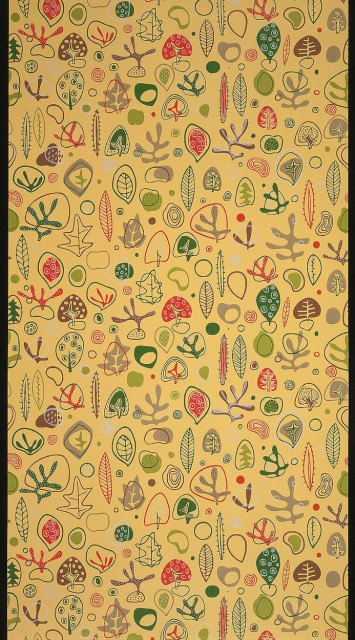The provenance of this piece is kind of a fun rags to riches story. This wallpaper is a very mass-produced example of mid-century design, containing a dense pattern of organic, stylized foliage forms with boomerang overlays, quite typical for the 1950s. The paper was donated to the Museum by a woman who was interning in the Wallcoverings Department, who happened to mention that her husband had been walking down the street and found this cool wallpaper in the garbage. When the intern was telling the story, the curator was intrigued and asked if she could see it. It turned out to be this really fun design. It’s well drawn, very vibrant, and quite representative of the period in which it was produced. The 1950s were a very high-period for wallpaper usage. The war had ended and new homes were being built for the returning veterans, and this was the last time in the 20th century when everyone used wallpaper. The Cooper-Hewitt collection contains nearly 1,000 different wallpapers produced during this period.
After seeing the paper the curator liked the design and presented it for acquisition to the Museum’s permanent collection. After acquisition it was then shown in an exhibition at Cooper-Hewitt, From Kitsch to Corbusier: Wallpapers from the 1950s. It also appeared on the cover of a desk calendar that accompanied the exhibition. It was then borrowed by the Brooklyn Museum of Art in 1995 to be shown in Vital Forms: American Art in the Atomic Age, 1940-60. So from being dumped in the garbage by someone who thought it was trash, to being acquired by the Cooper-Hewitt, National Design Museum and included in exhibitions at two major museums, this wallpaper definitely achieved its 15 minutes of fame in a story that would have made Andy Warhol proud.
